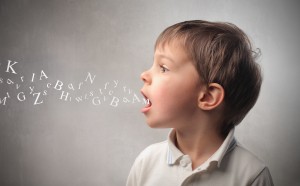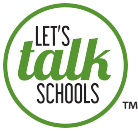 In this 1st of a 2 part series on speech and language development, Speech Language Pathologist Timberly Leite of Innovative Therapy Solutions, a full-service pediatric speech and occupational therapy facility in Harlem, gives an in-depth review of speech and language development and the age which most monolingual speaking children with accomplish speaking and hearing milestones. Part 2 will follow next week with details of the procedure for obtaining early intervention for your children.
In this 1st of a 2 part series on speech and language development, Speech Language Pathologist Timberly Leite of Innovative Therapy Solutions, a full-service pediatric speech and occupational therapy facility in Harlem, gives an in-depth review of speech and language development and the age which most monolingual speaking children with accomplish speaking and hearing milestones. Part 2 will follow next week with details of the procedure for obtaining early intervention for your children.
How do Speech and Language Develop?
The first 3 years of life, when the brain is developing and maturing, is the most intensive period for acquiring speech and language skills. These skills develop best in a world that is rich with sounds, sights, and consistent exposure to the speech and language of others.
There appear to be critical periods for speech and language development in infants and young children when the brain is best able to absorb language. If these critical periods are allowed to pass without exposure to language, it will be more difficult to learn.
What is the difference between a speech disorder and a language disorder?
Children who have trouble understanding what others say (receptive language) or difficulty sharing their thoughts (expressive language) may have a language disorder. Specific language impairment (SLI) is a language disorder that delays the mastery of language skills. Some children with SLI may not begin to talk until their third or fourth year.
Children who have trouble producing speech sounds correctly or who hesitate or stutter when talking may have a speech disorder. Apraxia of speech is a speech disorder that makes it difficulty to put sounds and syllables together in the correct order to form words.
The following information represents, on average, the age by which most monolingual speaking children will accomplish the listed milestones. Children typically do not master all items in a category until they reach the upper age in each age range. Just because your child has not accomplished one skill within an age range does not mean the child has a disorder. However, if you have answered no to the majority of items in an age range, you should seek the advice of a speech language pathologist
| Hearing and Understanding |
Talking |
Birth-3 Months
- Startles to loud sounds
- Quiets or smiles when spoken to
- Seems to recognize your voice and quiets if crying
- Increases or decreases sucking behavior in response to sound
|
Birth-3 Months
- Makes pleasure sounds (cooing, gooing)
- Cries differently for different needs
- Smiles when sees you
|
4-6 Months
- Moves eyes in direction of sounds
- Responds to changes in tone of your voice
- Notices toys that make sounds
- Pays attention to music
|
4-6 Months
- Babbling sounds more speech-like with many different sounds, including p, b and m
- Chuckles and laughs
- Vocalizes excitement and displeasure
- Makes gurgling sounds when left alone and when playing with you
|
7 Months-1 Year
- Enjoys games like peek-a-boo and pat-a-cake
- Turns and looks in direction of sounds
- Listens when spoken to
- Recognizes words for common items like "cup", "shoe", "book", or "juice"
- Begins to respond to requests (e.g. "Come here" or "Want more?")
|
7 Months-1 Year
- Babbling has both long and short groups of sounds such as "tata upup bibibibi"
- Uses speech or noncrying sounds to get and keep attention
- Uses gestures to communication (waving, holding arms to be picked up)
- Imitates different speech sounds
- Has one or two words (hi, dog, dada, mama) around first birthday, although sounds may not be clear
|
1-2 Years
- Points to a few body parts when asked.
- Follows simple commands and understands simple questions ("Roll the ball," "Kiss the baby," "Where's your shoe?").
- Listens to simple stories, songs, and rhymes.
- Points to pictures in a book when named.
|
1-2 Years
- Says more words every month.
- Uses some one- or two- word questions ("Where kitty?" "Go bye-bye?" "What's that?").
- Puts two words together ("more cookie," "no juice," "mommy book").
- Uses many different consonant sounds at the beginning of words.
|
2-3 Years
- Understands differences in meaning ("go-stop," "in-on," "big-little," "up-down").
- Follows two requests ("Get the book and put it on the table").
- Listens to and enjoys hearing stories for longer periods of time
|
2-3 Years
- Has a word for almost everything
- Uses two- or three- words to talk about and ask for things.
- Uses k, g, f, t, d, and n sounds.
- Speech is understood by familiar listeners most of the time.
- Often asks for or directs attention to objects by naming them.
|
3-4 Years
- Hears you when you call from another room.
- Hears television or radio at the same loudness level as other family members.
- Answers simple "who?", "what?", "where?", and "why?" questions.
|
3-4 Years
- Talks about activities at school or at friends' homes.
- People outside of the family usually understand child's speech.
- Uses a lot of sentences that have 4 or more words.
- Usually talks easily without repeating syllables or words.
|
4-5 Years
- Pays attention to a short story and answers simple questions about them.
- Hears and understands most of what is said at home and in school.
|
4-5 Years
- Uses sentences that give lots of details ("The biggest peach is mine").
- Tells stories that stick to topic.
- Communicates easily with other children and adults.
- Says most sounds correctly except a few like l, s, r, v, z, ch, sh, th.
- Says rhyming words.
- Names some letters and numbers.
- Uses the same grammar as the rest of the family.
|
American Speech Language and Hearing Association. (1997-2012). Retrieved January 16, 2012, from http://www.asha.org/public/speech/development/
 In this 1st of a 2 part series on speech and language development, Speech Language Pathologist Timberly Leite of Innovative Therapy Solutions, a full-service pediatric speech and occupational therapy facility in Harlem, gives an in-depth review of speech and language development and the age which most monolingual speaking children with accomplish speaking and hearing milestones. Part 2 will follow next week with details of the procedure for obtaining early intervention for your children.
In this 1st of a 2 part series on speech and language development, Speech Language Pathologist Timberly Leite of Innovative Therapy Solutions, a full-service pediatric speech and occupational therapy facility in Harlem, gives an in-depth review of speech and language development and the age which most monolingual speaking children with accomplish speaking and hearing milestones. Part 2 will follow next week with details of the procedure for obtaining early intervention for your children.
